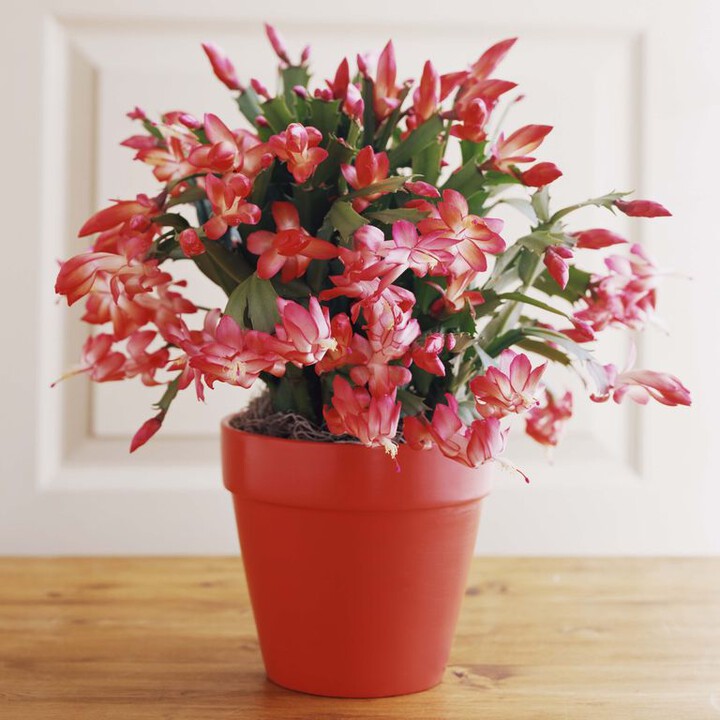With a little TLC, this winter plant will flower again and again.

Christmas cacti bloom just in time for the holidays (hence their name), and they're pretty stunning too. The hanging branches, which are made up of flat, glossy green segments, can grow to up to 3 feet long. Flowers in red, white, yellow, pink, or purple appear at the tips of these branches and measure up to 3 inches long with several tiers of petals. Each bloom lasts for several days, and the entire flowering period of most cultivars will span several weeks. But in order to keep these plants looking beautiful, you need to follow all the steps involved with proper Christmas cactus care.
There are certain factors that can help — or hinder — your Christmas cactus's potential. For example, this Brazilian coastal plant (which is also known as Schlumbergera) favors more humid conditions than desert-dwelling species do. Plus, it needs extended periods of darkness before it can begin flowering.
So, with that said, here's how to ensure this festive plant keeps brightening up your home year after year.

How to Care for Christmas Cacti
A lack of water and dramatic temperature swings can cause flower buds to drop more rapidly. Maximize your specimen's blooming period by paying attention to these six key factors:
Soil: Use a quality soil rich in humus and other nutrients.
Temperature: Maintain an optimal climate of 65 degrees.
Watering: Keep the soil evenly moist while your plant is blooming, misting it frequently.
Light: Place the cactus in an east-facing window for moderate light and some direct sun.
Fertilization: Apply a high-potassium fertilizer every two weeks once buds form.
Transplantation: Repot your cactus each year after flowering.
How to Encourage More Blooming
Keep plants cool (around 50 degrees) following their blooming period. Water them to keep the soil just barely moist, and be sure to withhold fertilizer. When new growth begins, use the following strategy to encourage blooming: House the plants in an environment with a temperature between 55 and 65 degrees, and alternate between giving them 10 hours of light and 14 hours of total darkness for four to six weeks after the growth appears. When buds appear, introduce the plant to warmer temperatures and begin regular culture, as described above. Plants should bloom in about six weeks.